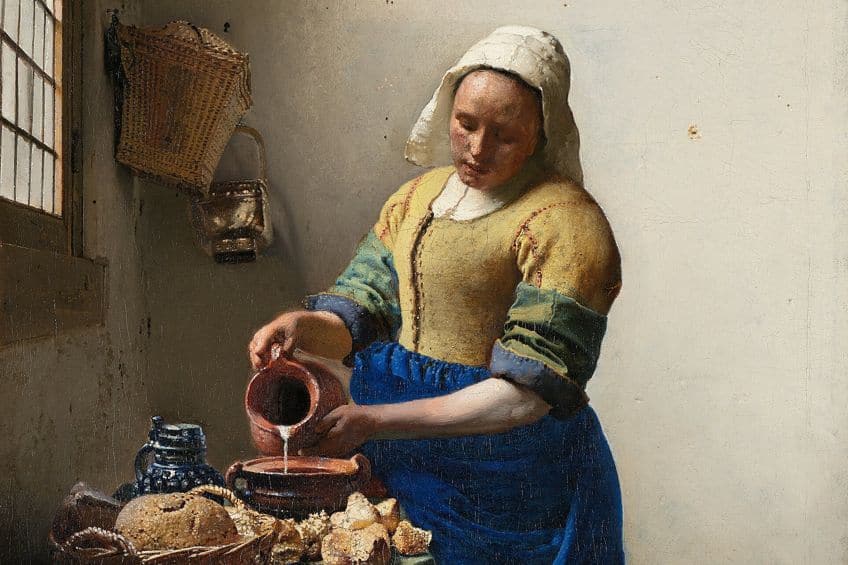Genre Painting – Creating Art That Explores Mundane Life
Genre painting, a captivating facet of the vast realm of genre art, has perennially intrigued art enthusiasts and scholars alike. In this article, we embark on a journey to unravel the essence of genre painting by delving into its definition, historical significance, and the enduring allure it holds in the art world. What is a genre painting? How does it encapsulate the nuanced fabric of everyday life? As we navigate through famous genre paintings and explore the intricacies of genre artworks, we aim to shed light on the enduring relevance of genre painting in understanding society, culture, and the human experience. Join us on this enlightening exploration of an art form that, despite its humble origins, has carved a prominent niche in the annals of art history.
Contents
Genre Painting’s Definition: What Is a Genre Painting?
Genre painting’s definition lies at the heart of understanding this captivating art form. At its core, a genre painting is a vivid and often intimate representation of everyday life, capturing scenes, activities, and moments that resonate with the viewer’s own experiences. These works typically depict ordinary people engaging in routine tasks, social interactions, or leisurely pursuits. What distinguishes genre paintings is their ability to transport us into the familiar yet artfully rendered world of the past, offering a glimpse into the customs, culture, and aesthetics of a specific time and place. Often characterized by meticulous attention to detail and a keen sense of observation, genre paintings invite us to contemplate the human condition, our shared histories, and the enduring appeal of the mundane in art. In this exploration of genre painting’s definition, we aim to unravel the layers of meaning embedded in these captivating snapshots of everyday life.
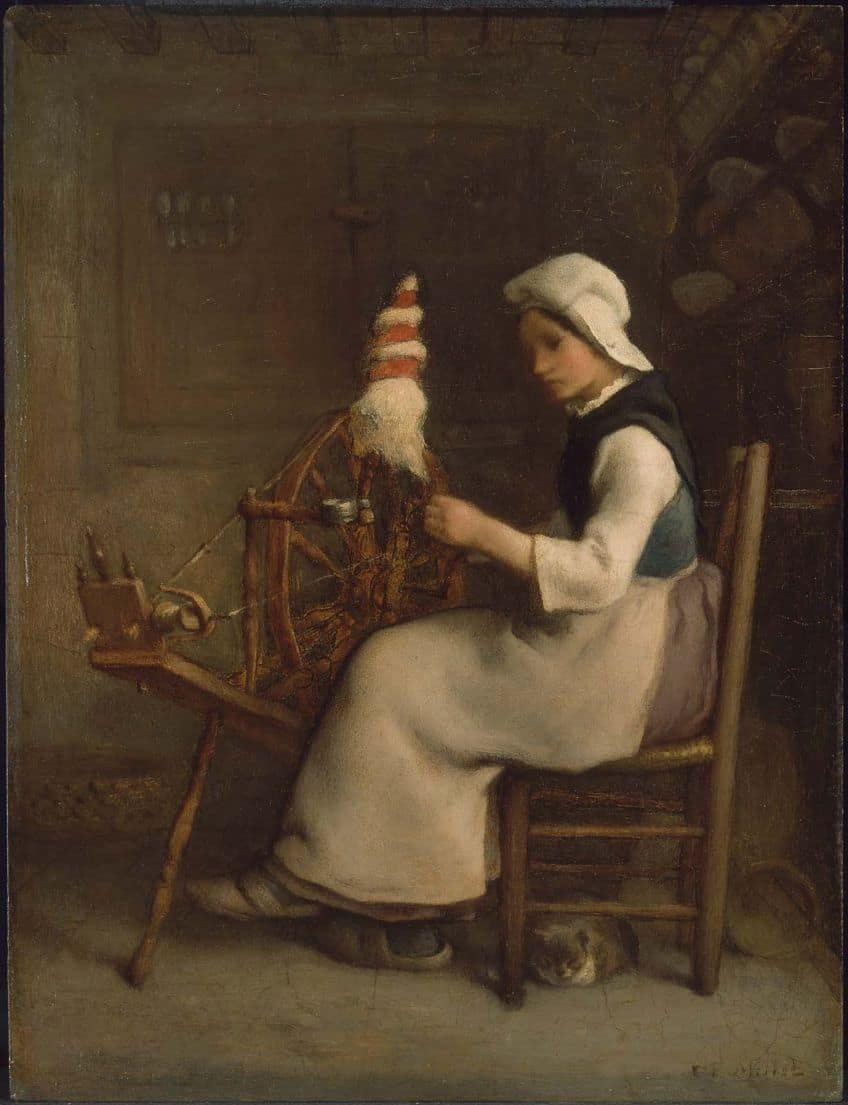
The Flourishing of Genre Painting: Origins, Socio-Political Context, and Evolution
Genre painting emerged as a prominent genre within the broader spectrum of visual arts during the 17th century in Europe. This movement holds a rich historical tapestry woven from a complex interplay of artistic, socio-political, and cultural factors. In this section of the article, we embark on a journey through time to explore the roots of genre painting.
We will also explore the art world it thrived in and the socio-political context that shaped its evolution.
The Birth of Genre Painting
Genre painting found its roots in the Dutch Golden Age of the 17th century, a period marked by profound economic prosperity and cultural transformation. As the Dutch Republic emerged as a global trading powerhouse, the bourgeoisie class prospered, creating a new demand for art that depicted their everyday lives. Artists like Johannes Vermeer (1632 – 1675), Jan Steen (1626 – 1679), and Pieter de Hooch (1629 – 1684) began to depict scenes of ordinary life, capturing the domestic, social, and leisure activities of the burgeoning middle class. The newfound wealth and burgeoning urban centers provided a fertile ground for genre painting to take root.

The Art World of Genre Painting
Genre painting flourished in a vibrant artistic environment characterized by a shift in patronage. Unlike the traditional reliance on the church and aristocracy, genre painters found a burgeoning market among the prosperous middle class. These artists created scenes that resonated with the everyday experiences of their patrons, making art more accessible and relatable. The genre painting movement was marked by meticulous attention to detail, exquisite use of light and color, and a focus on capturing the nuances of human emotion.
This shift in artistic focus mirrored a broader cultural shift towards humanism and the celebration of the ordinary.
Socio-Political Context
The socio-political context in which genre painting thrived was shaped by the Dutch Republic’s unique circumstances. The country had recently gained independence from Spanish rule and embraced a republican form of government. This newfound political freedom fostered a sense of national identity and a deepening pride in Dutch culture. Genre painting played a crucial role in this by presenting a vision of Dutch life that was distinct from the opulence and excess of the aristocracy in other European countries. It celebrated the simple virtues of the middle class, such as hard work, family life, and civic duty.
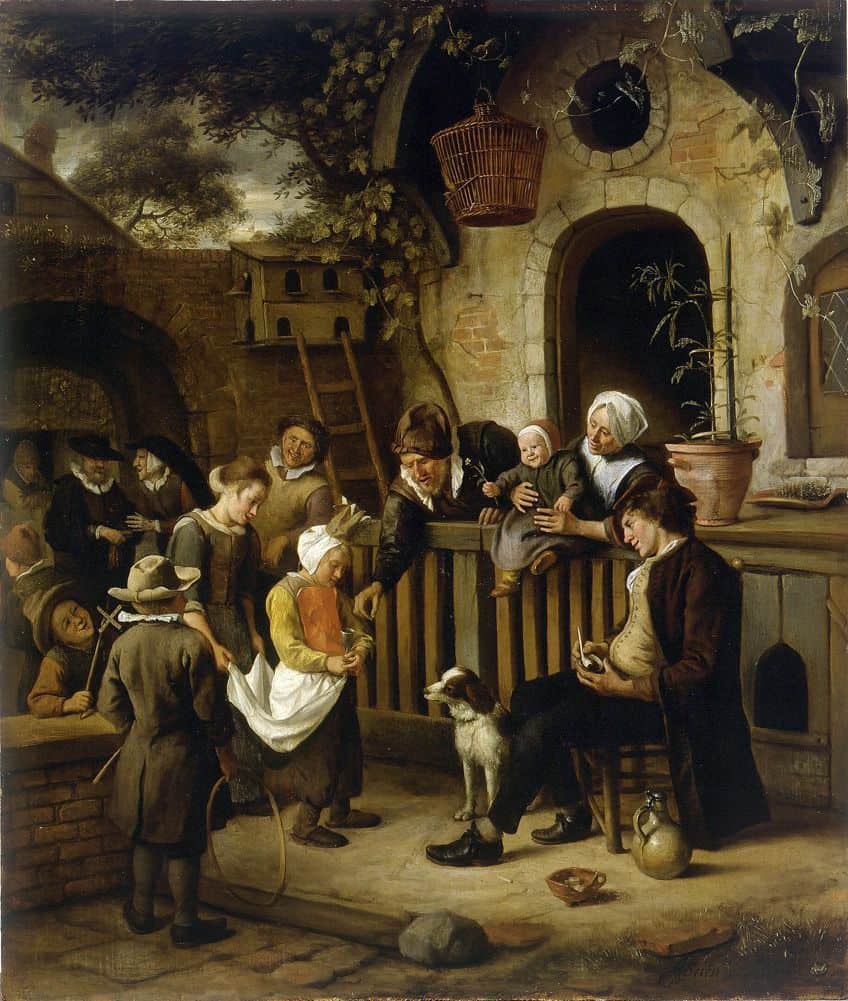
The Evolution of Genre Painting
Genre painting did not remain static but evolved over time. In the 18th century, the Rococo style introduced a more lighthearted and ornate approach to genre scenes, reflecting changing tastes in art. As the 19th century unfolded, genre painting continued to adapt, with artists like Jean-François Millet (1814 – 1875) and Gustave Courbet (1819 – 1877) in France embracing the style to convey social and political messages.
In the United States, the Hudson River School incorporated elements of genre painting into their landscape works, blending the beauty of nature with human activity.
The Artistry Unveiled: Technical Characteristics of Genre Painting
Genre painting stands as a testament to the skill and artistry of painters across centuries. Beyond the narratives and emotions depicted, the technical characteristics of genre painting play a crucial role in shaping the visual impact and resonance of these works of art. In this section of the article, we delve into the technical aspects that define genre painting, shedding light on the techniques, materials, and stylistic choices that have made this genre a cherished part of art history.
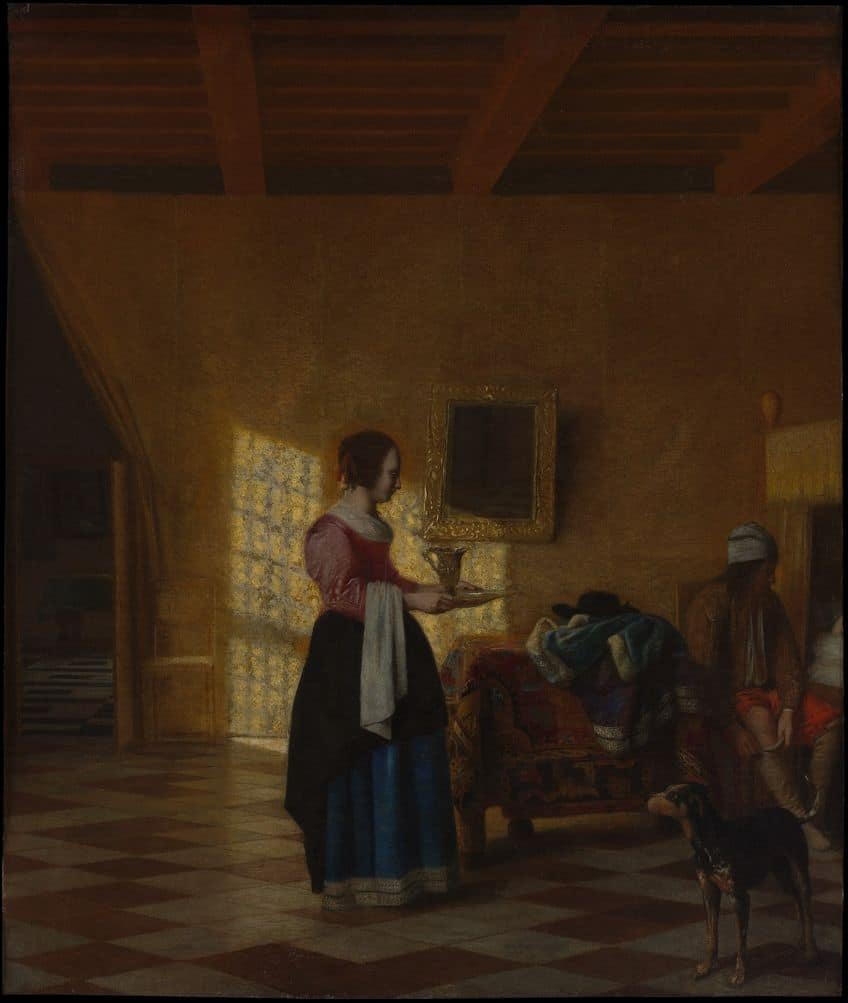
Composition and Framing
Genre paintings often feature carefully composed scenes that draw the viewer’s eye to specific elements within the canvas. Compositional methods such as the rule of thirds, guiding lines, and focal points help direct the viewer’s gaze and create a sense of harmony and symmetry.
The framing of these scenes is equally crucial, as artists use architectural elements, doorways, windows, or natural surroundings to frame the central action, providing a sense of depth and perspective.
Lighting and Chiaroscuro
Lighting is a hallmark of genre painting, with artists using it to set the mood, enhance the narrative, and highlight key elements. Many genre painters were masters of chiaroscuro, a painting strategy that highlights the disparity between light and shadow. This technique adds depth and three-dimensionality to the subjects and creates a captivating interplay of light that adds to the overall visual appeal.
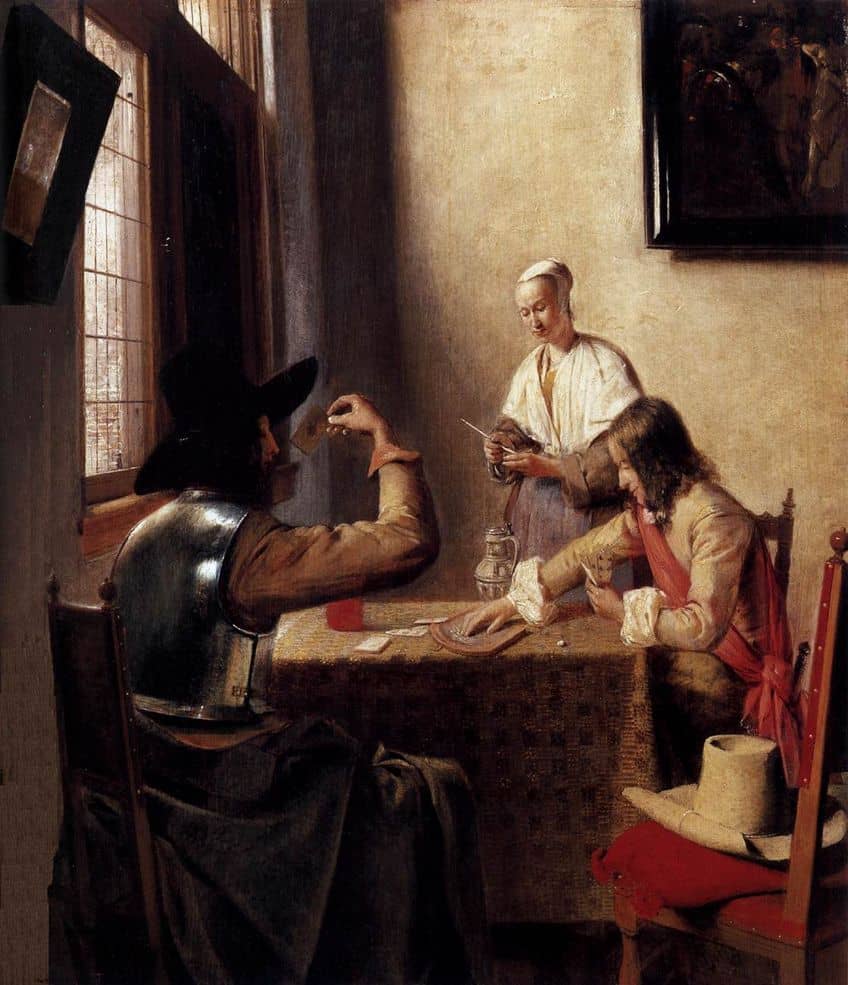
Brushwork and Texture
The brushwork in genre painting varies widely depending on the artist’s style and intention. Some artists employ meticulous, highly detailed brushwork to capture every nuance of the scene, while others use looser, more impressionistic strokes to convey a sense of immediacy and atmosphere.
Texture is often emphasized, whether in the rendering of fabrics, materials, or the tactile qualities of objects, lending a tangible quality to the depicted world.
Color Palette
The choice of color palette is a crucial element in genre painting. Artists attentively select colors to evoke specific emotions and atmospheres. Warm colors like reds and yellows can create a sense of comfort and closeness, while cooler tones like blues and greens might suggest tranquility or contemplation. The harmonious use of color contributes to the overall visual harmony of the artwork.
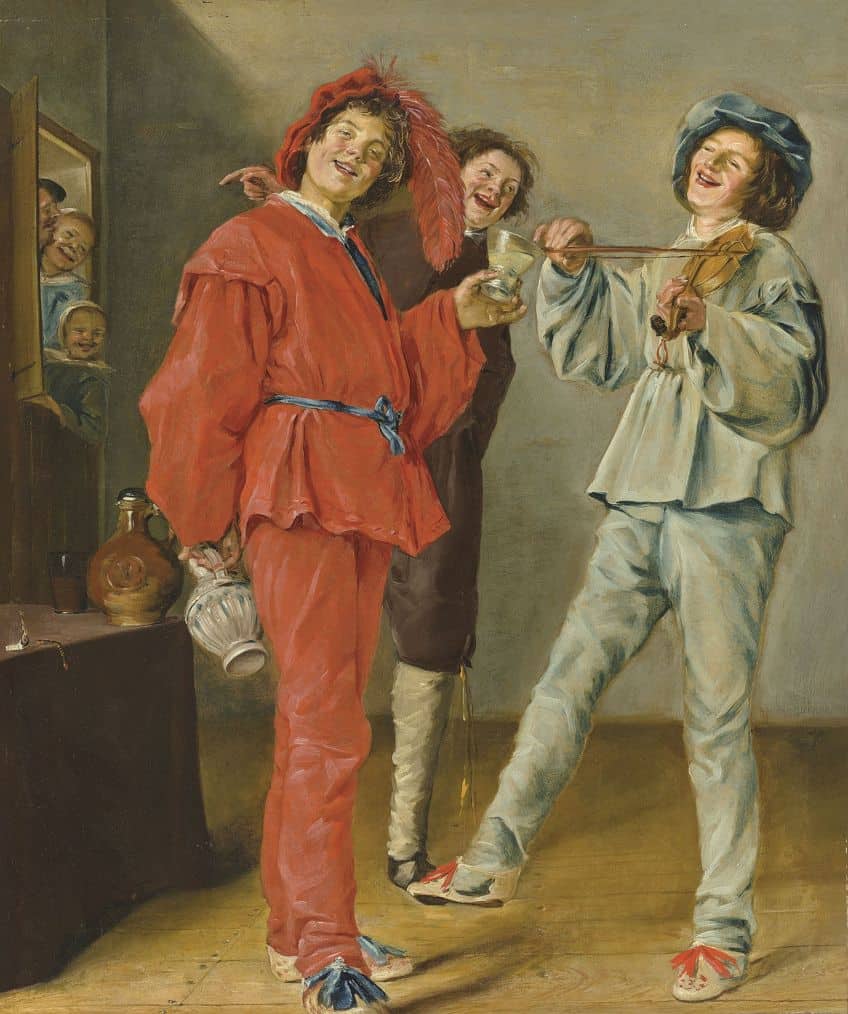
Details and Symbolism
Genre paintings are renowned for their attention to detail, which helps convey the everyday life and culture of the depicted period. Artists often include symbolic elements that enhance the narrative and deliver more resounding layers of meaning.
These details may reference societal norms, customs, or even allegorical elements, inviting viewers to explore the painting’s story beyond its surface.
Realism and Narrative
Genre painting often leans towards realism, with artists striving to accurately depict the physical world. This commitment to realism allows viewers to connect with the scenes on a personal level, as they recognize familiar elements from their own lives. Additionally, the narrative aspect of genre painting plays a pivotal role in conveying stories, emotions, and social commentary.

Famous Genre Painting Artists
In the rich tapestry of genre painting, certain artists have left an indelible mark on the canvas of art history. In this section, we delve into the lives and careers of some of the most prominent and influential genre painters in history.
These artists have not only contributed masterpieces to the genre but have also shaped its evolution, leaving an enduring legacy that continues to encourage and delight art lovers worldwide.
Rembrandt van Rijn (1606 – 1669)
| Date of Birth | 15 July 1606 |
| Date of Death | 4 October 1669 |
| Place of Birth | Amsterdam, Netherlands |
| Nationality | Dutch |
| Periods | Baroque and Dutch Golden Age |
One of the most illustrious and influential figures in the history of art, Rembrandt van Rijn was a Dutch painter and etcher who lived during the Dutch Golden Age. Born in Leiden in 1606, Rembrandt’s exceptional talent emerged at an early age, and he went on to become a master of light, shadow, and emotion.
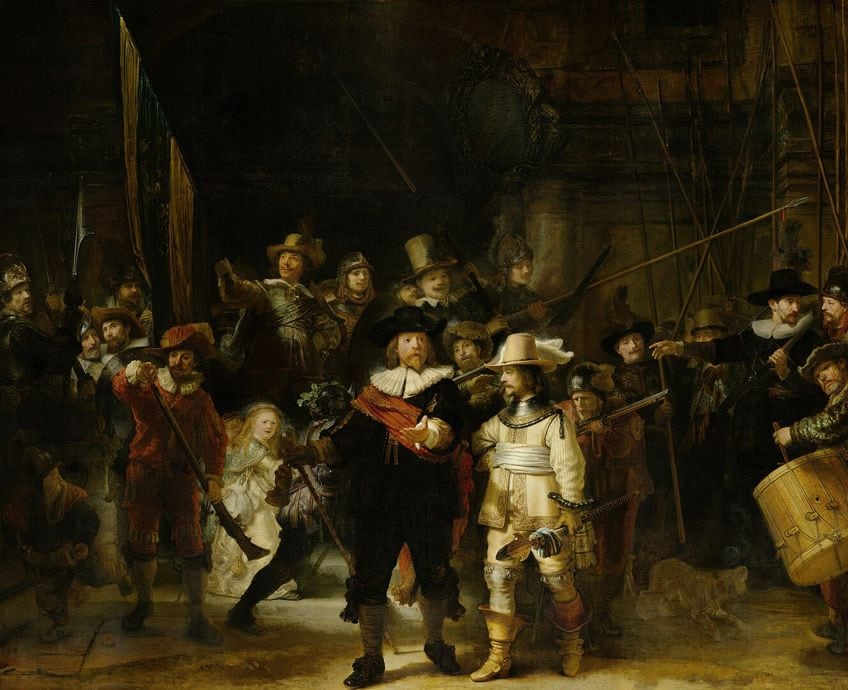
His body of work includes an extraordinary range of portraits, self-portraits, historical, and biblical scenes, each characterized by his virtuosic use of chiaroscuro and an unmatched ability to penetrate the depths of the human soul. Rembrandt’s artistry transcends time, making him a cornerstone of Dutch Baroque art and a revered figure in the annals of global art history.
His enduring legacy continues to inspire and captivate artists and art enthusiasts alike.
Judith Leyster (1609 – 1660)
| Date of Birth | 28 July 1609 |
| Date of Death | 10 February 1660 |
| Place of Birth | Haarlem, Netherlands |
| Nationality | Dutch |
| Periods | Baroque and Dutch Golden Age |
A fireball in the world of Dutch Golden Age painting, Judith Leyster defied the conventions of her time to emerge as one of the most accomplished artists of the 17th century. Born in Haarlem, Netherlands, in 1609, Leyster’s exceptional talent was evident from an early age.
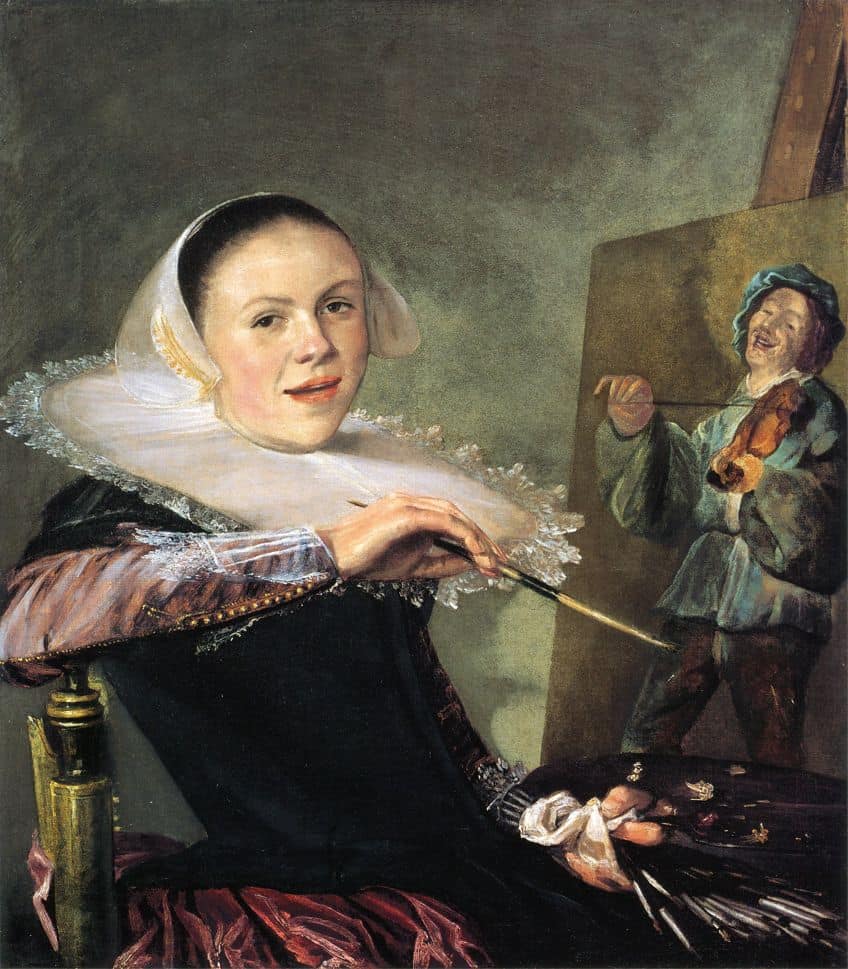
Her oeuvre is distinguished by its remarkable command of light and shadow, a skill she deployed to illuminate her genre scenes and portraits with a rare vibrancy and depth. Notably, Leyster was one of the few female artists of her era to achieve recognition and success in a predominantly male-dominated art world. Her works often feature lively and engaging depictions of daily life, showcasing her ability to capture the charm and character of her subjects.
Judith Leyster’s legacy endures through her contributions to the Dutch Baroque tradition, and her pioneering spirit continues to inspire generations of artists and art enthusiasts alike.
Jan Steen (1626 – 1679)
| Date of Birth | 1626 |
| Date of Death | 3 February 1679 |
| Place of Birth | Leiden, Netherlands |
| Nationality | Dutch |
| Periods | Baroque and Dutch Golden Age |
Jan Steen, a master of 17th-century Dutch genre painting, weaves captivating narratives through his art that offer a window into the everyday life of the Dutch Golden Age.
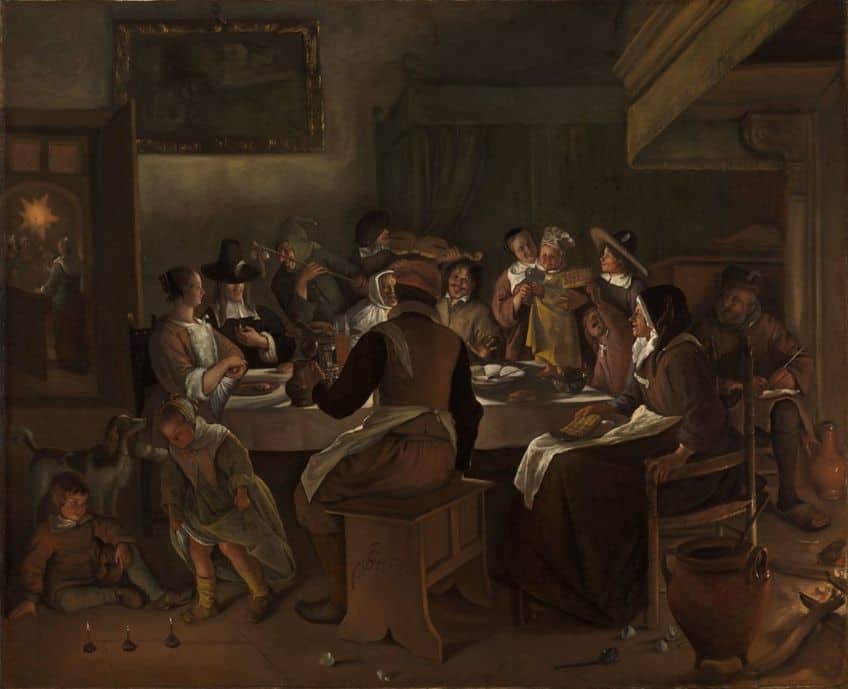
With an astute eye for detail, Steen portrays scenes that blend humor, satire, and keen observation. His works are characterized by their intricate compositions, vibrant use of color, and an array of expressive characters that populate his bustling canvases. Steen’s genre scenes often carry moral undertones, inviting viewers to reflect on human folly and the imperfections of society.
His ability to combine storytelling with technical finesse has earned him a lasting place in the world of art, where his work continues to entertain, enlighten, and provoke contemplation.
Johannes Vermeer (1632 – 1675)
| Date of Birth | 31 October 1632 |
| Date of Death | December 1675 |
| Place of Birth | Delft, Netherlands |
| Nationality | Dutch |
| Periods | Baroque and Dutch Golden Age |
Johannes Vermeer was another Dutch master of the 17th century, celebrated for his exceptional contributions to the world of art. Born in Delft, Netherlands, in 1632, Vermeer’s artistic legacy revolves around his exquisite handling of light, meticulous attention to detail, and an unrivaled ability to capture the subtleties of domestic life.

Despite producing a relatively small body of work, his paintings, such as Girl with a Pearl Earring (1665) and The Milkmaid (1657 – 1658), stand as timeless examples of Dutch Golden Age artistry. Vermeer’s distinctive use of color and composition, combined with his focus on everyday subjects, has cemented his reputation as a master of genre painting.
His work continues to captivate art enthusiasts and scholars, showcasing the enduring power of his unique artistic vision.
Famous Genre Paintings
Within the captivating realm of genre painting, a treasure trove of masterpieces awaits discovery, each a testament to the enduring allure of everyday life rendered on canvas. In this section, we embark on a journey through some of the most celebrated and iconic genre paintings in art history.
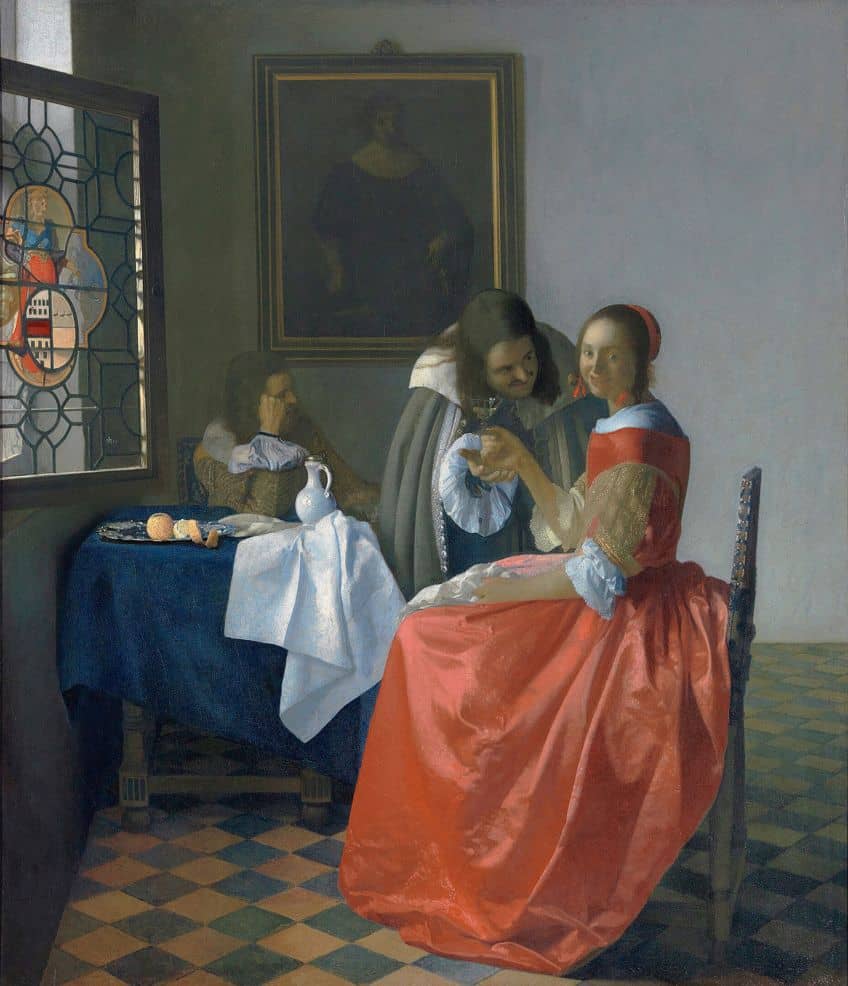
The Anatomy Lesson of Dr. Nicolaes Tulp (1632) Rembrandt van Rijn
| Title | The Anatomy Lesson of Dr. Nicolaes Tulp |
| Date | 1632 |
| Medium | Oil on canvas |
| Dimensions (cm) | 170 x 216 |
| Location | Mauritshuis, Den Haag, Netherlands |
The Anatomy Lesson of Dr. Nicolaes Tulp (1632) by Rembrandt van Rijn is a genre painting that transcends its genre, offering a profound visual and conceptual exploration. In this meticulously composed scene, Dr. Tulp, a prominent Amsterdam physician, presides over a dissection of a cadaver while a group of fellow doctors and scholars observes with intense concentration. Rembrandt’s masterful use of chiaroscuro casts dramatic light and shadow, creating a mesmerizing interplay of darkness and illumination that highlights the subject matter.
Conceptually, the painting delves into themes of science, knowledge, and the human condition. It captures the essence of the Enlightenment era, a period marked by a profound interest in the exploration of the natural world.
The meticulous dissection, the scrutiny of the onlookers, and the sense of purpose in Dr. Tulp’s gesture symbolize the quest for knowledge and the advancement of science. However, it also raises questions about the ethics of such practices and the balance between scientific inquiry and the dignity of the deceased.
Moreover, Rembrandt’s portrait of Dr. Tulp, set against a dark background, exudes a sense of authority and intellect, while the expressions on the faces of the onlookers reflect a mix of curiosity, reverence, and perhaps a touch of apprehension. The painting’s composition and use of light draw attention to the central figure, emphasizing the importance of the anatomist in the pursuit of understanding the human body.
In essence, The Anatomy Lesson of Dr. Nicolaes Tulp not only provides a vivid glimpse into a specific historical moment but also prompts viewers to contemplate the broader themes of knowledge acquisition, the human body’s mysteries, and the ethical considerations surrounding scientific exploration. Rembrandt’s mastery of light and his ability to capture the intricacies of human emotion makes this painting a timeless masterpiece that continues to resonate with audiences today.

The Young Flute Player (1635) by Judith Leyster
| Title | The Young Flute Player |
| Date | 1635 |
| Medium | Oil on canvas |
| Dimensions (cm) | 73 x 62 |
| Location | Nationalmuseum, Stockholm, Sweden |
The Young Flute Player (1635) by Judith Leyster is a captivating genre painting that not only showcases the artist’s technical prowess but also offers a glimpse into the essence of 17th-century Dutch life. In this scene, a young boy, poised with youthful enthusiasm, stands prominently in the foreground. He cradles his flute, poised to play, and his expression radiates a sense of anticipation and joy.
Leyster’s skillful use of chiaroscuro imparts a vivid sense of realism, as the soft glow of light cascades across the boy’s face and instrument, creating a striking contrast with the darker background.
The composition is beautifully balanced, with the boy’s figure dominating the canvas, drawing the viewer’s eye to his vibrant presence. Behind him, we catch a glimpse of an open door, hinting at the possibility of an audience or a larger world beyond. This element adds depth to the scene, enhancing the narrative aspect of the painting.
Conceptually, The Young Flute Player speaks to the theme of the fleeting joys of youth and the universal language of music. The boy’s focused yet innocent expression conveys a sense of immersion in the moment, emphasizing the power of music to transport us and elicit emotions. The work captures a sense of nostalgia, reminding us of the timeless appeal of music as a source of both personal expression and communal connection.
Leyster’s ability to infuse this genre scene with life and emotion is a testament to her exceptional talent as an artist. The Young Flute Player not only invites us to appreciate the technical mastery of its creator but also resonates with viewers through its celebration of the simple yet profound moments that define the human experience.

The Milkmaid (1657 – 1658) by Johannes Vermeer
| Title | The Milkmaid |
| Date | 1657 – 1658 |
| Medium | Oil on canvas |
| Dimensions (cm) | 46 x 41 |
| Location | Rijksmuseum, Amsterdam, Netherlands |
The Milkmaid (1657–1658) by Johannes Vermeer is a skillful genre painting that epitomizes the artist’s remarkable skill in capturing the poetry of everyday life. In this meticulously crafted composition, a young woman is engrossed in the act of pouring milk from a jug into a bowl. Vermeer’s meticulous attention to detail is apparent in every facet of the artwork, from the delicate play of light on the woman’s apron to the textured surface of the bread crumbs scattered across the table.
The interplay of light and shadow, a hallmark of Vermeer’s style, lends a luminous quality to the scene, drawing the viewer’s gaze toward the central figure and imbuing the moment with a profound sense of quietude.
Conceptually, The Milkmaid explores themes of domesticity, labor, and the inherent beauty found in the ordinary. Vermeer elevates the mundane task of pouring milk into a transformative act, inviting viewers to contemplate the grace and dignity intrinsic to daily life. The painting encapsulates a sense of timelessness, where this seemingly modest act becomes a meditation on the enduring rhythms of human existence. Vermeer’s extraordinary ability to infuse profound meaning into the commonplace establishes The Milkmaid as a cherished jewel in the realm of art, where the ordinary is rendered extraordinary through the artist’s meticulous craftsmanship and conceptual depth.
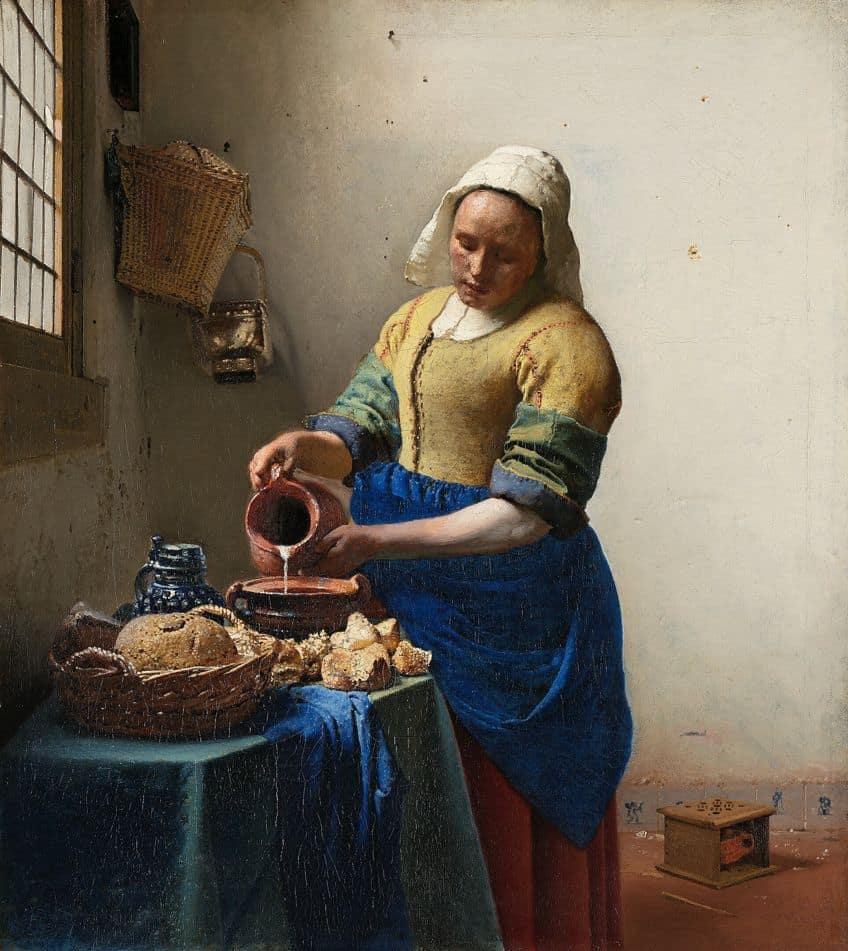
The Physician’s Visit (1660 – 1662) by Jan Steen
| Title | The Physician’s Visit |
| Date | 1660 – 1662 |
| Medium | Oil on canvas |
| Dimensions (cm) | 49 x 42 |
| Location | Apsley House, London, United Kingdom |
The Physician’s Visit (1660-1662) by Jan Steen is a captivating genre painting that offers a profound visual and conceptual exploration of a domestic scene. In this composition, Steen skillfully depicts a family gathered in their home, with a physician attending to a sick girl. The room is filled with meticulously rendered details, providing a glimpse into the daily life of the Dutch Golden Age.
Visually, Steen employs a balanced composition that draws the viewer’s gaze to the central figures—the concerned mother and the attentive physician.
The play of light from the window on the left casts a warm, natural glow on the characters, enhancing the sense of intimacy. Steen’s meticulous attention to detail is evident in the texture of the fabrics, the expressions on the faces of the characters, and the cluttered yet cozy atmosphere of the room. Conceptually, The Physician’s Visit invites viewers to reflect on themes of family, care, and the human condition. The worried mother’s gaze and the physician’s focused attention convey the universal concern for the well-being of loved ones. Steen’s narrative prowess shines as he captures a moment of vulnerability and the reassurance that comes from medical care within the familiar confines of the home. The painting beautifully encapsulates the essence of everyday life in the 17th century while resonating with timeless themes of compassion and family bonds.

In the rich tapestry of art history, genre painting has stood out as an exquisite art movement. Defined by its ability to capture the nuances of daily life, genre art has transcended time and place to become a cherished aspect of artistic expression. Through this exploration of genre painting, we have delved into its definition and the technical characteristics that make it an enduring art form. We have traversed the captivating worlds of famous genre paintings and the artists who brought them to life. In doing so, we have come to appreciate the genre artwork’s ability to transport us into the past and offer insights into the shared human experience. As we conclude our journey through the realm of genre painting, we find that its enduring appeal lies in its ability to illuminate the beauty found in the ordinary, to tell stories of the everyday, and to celebrate the timeless aspects of the human condition.
Frequently Asked Questions
What Is Genre Art?
Genre art, often referred to as genre painting, is a distinctive category of visual art that focuses on depicting scenes of everyday life and ordinary people engaged in routine activities. This genre emerged as a prominent form of artistic expression during the Dutch Golden Age in the 17th century, but has since continued to evolve and adapt. Genre art aims to capture the essence of daily existence, offering viewers insights into the customs, culture, and human experiences of specific times and places. Whether through the depiction of domestic life, work, leisure, or social gatherings, genre art invites us to connect with the familiar and appreciate the beauty found in the ordinary aspects of our lives.
What Are Famous Genre Artworks?
Famous genre artworks encompass a diverse array of celebrated paintings that have left an enduring mark on the world of art. These iconic works often capture the essence of everyday life, inviting viewers to connect with the stories and emotions depicted on canvas. Among the most renowned genre paintings are Johannes Vermeer’s The Milkmaid (1657 – 1658), capturing a serene moment of domesticity, and Jan Steen’s The Merry Family (1668), which depicts a lively portrayal of a bustling household. Other notable examples include Pieter Bruegel the Elder’s The Peasant Wedding (1566 – 1567), which offers a glimpse into rural celebrations, and Jean-François Millet’s The Gleaners (1857), which portrays the dignity of labor in the countryside. These famous genre artworks transcend their eras, providing insights into human experiences and cultural contexts that continue to resonate with audiences worldwide.
Nicolene Burger, a South African multimedia artist and creative consultant, specializes in oil painting and performance art. She earned her BA in Visual Arts from Stellenbosch University in 2017. Nicolene’s artistic journey includes exhibitions in South Korea, participation in the 2019 ICA Live Art Workshop, and solo exhibitions. She is currently pursuing a practice-based master’s degree in theater and performance. Nicolene focuses on fostering sustainable creative practices and offers coaching sessions for fellow artists, emphasizing the profound communicative power of art for healing and connection. Nicolene writes blog posts on art history for artfilemagazine with a focus on famous artists and contemporary art.
Learn more about Nicolene Burger and about us.
Cite this Article
Nicolene, Burger, “Genre Painting – Creating Art That Explores Mundane Life.” artfilemagazine – Your Online Art Source. September 19, 2023. URL: https://artfilemagazine.com/genre-painting/
Burger, N. (2023, 19 September). Genre Painting – Creating Art That Explores Mundane Life. artfilemagazine – Your Online Art Source. https://artfilemagazine.com/genre-painting/
Burger, Nicolene. “Genre Painting – Creating Art That Explores Mundane Life.” artfilemagazine – Your Online Art Source, September 19, 2023. https://artfilemagazine.com/genre-painting/.


